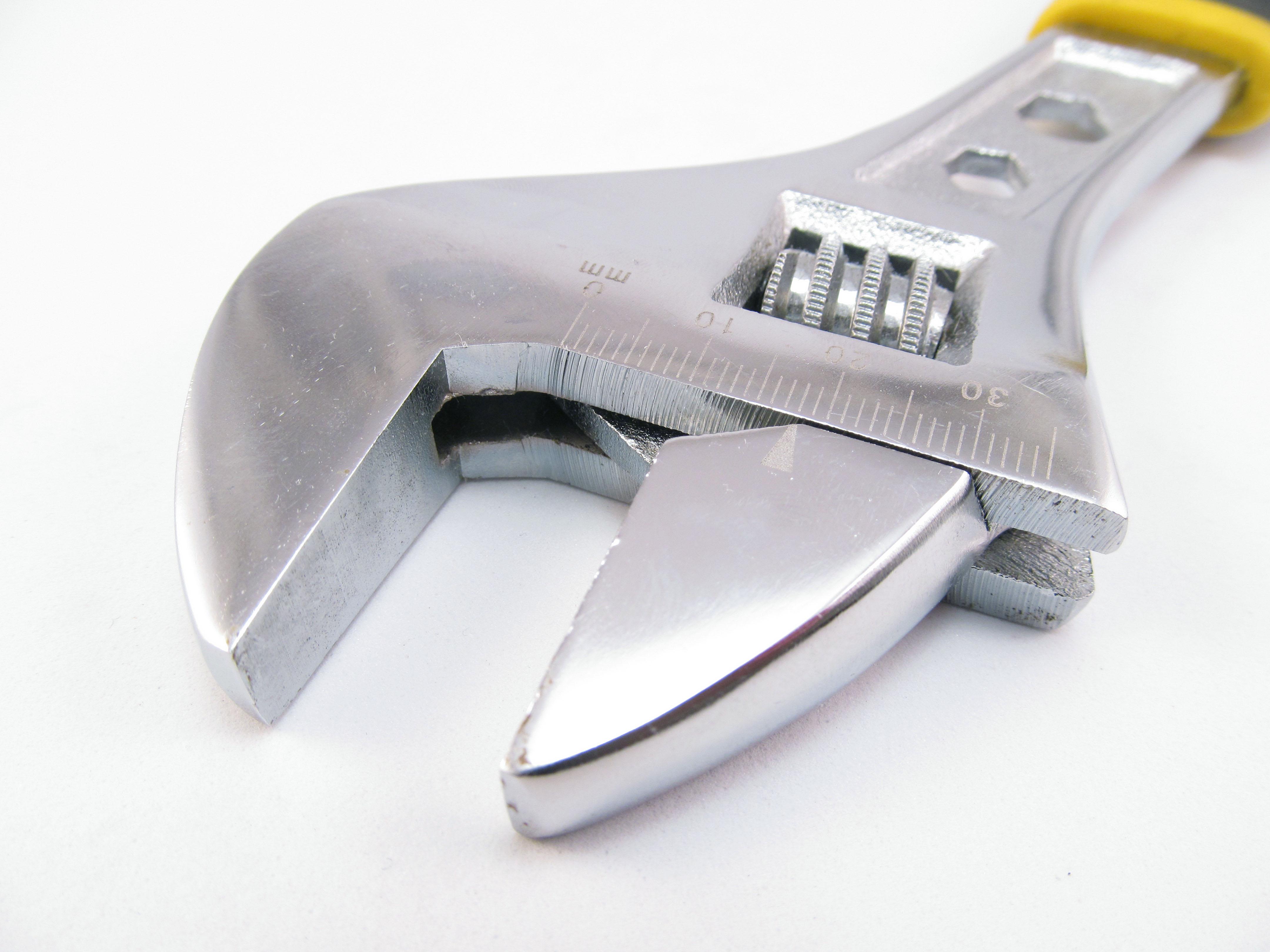LCS Heating and Cooling, LLC is currently accepting resumes for a Lead Installer position. A minimum of 5 years experience installing furnaces, air conditioners and heat pumps in residential settings is required. Applicants must also live in Indianapolis or immediate surrounding areas.
Job Duties & Responsibilities:
- Accurately and efficiently install furnaces, air conditioners, heat pumps, humidifiers, ductwork and smart thermostats in residential settings. Light commercial experience is a plus but not required.
- Complete invoices and collect customer payment.
- Communicate with customer, install manager and LCS office
- Effectively able to delegate tasks on the job to install helper
- Keep van stocked and clean
Other Requirements:
- Applicants must feel comfortable climbing a ladder
- Applicants must be able to safely lift at least 75 pounds
- Applicants must be willing and able to learn company software
- Must be reliable and able to work some Saturdays during busy seasons
- Applicants must have a clean driving record and background check
Applicants must want to be a part of a team! We are currently a team that works well together and can count on one another. We're looking for people who want that in a company and in their co-workers. A positive attitude, great sense of humor, interest in longevity and high levels of integrity and honesty are a must!
Benefits:
- Competitive Hourly Wage
- Paid Holidays
- PTO
- Health Insurance
- Retirement Plan with Company Match
- Tool Account
- Bonus Opportunities
- Opportunities to learn/perform annual maintenance are available
- Opportunity to rotate on-call with company vehicle to drive home is available
July 7, 2017
No one wants to spend more money on their bills. You should only pay for what you need, right? Yet some HVAC setups don’t work that way.
Every now and then, we see homes that consistently waste energy by heating or cooling rooms that you don’t even use. And when that happens, you end up overpaying on your energy bills. If your HVAC system can be organized the right way, you only use what you need. Your home’s warm or cool air can get directed where you actually want it. That way, you won’t get overcharged for your energy usage. The setup is called zoning.
About HVAC Whole-Home Zoning
Homes with HVAC zoning can regulate their energy usage much more efficiently. With these setups, your system won’t automatically heat or cool areas of your home that don’t need it. And without zoning? Well, it’s kind of like having every lightbulb in your home turn on when you flip the switch on your bedside lamp. You might only need a couple rooms cooled, but your HVAC is trying to lower the temp everywhere in your home.
Unfortunately, not all homes can be zoned. It just depends on how easily you can access your ductwork (since no one really wants to tear into their walls). But if your home does happen to be a good candidate for zoning, it’s a huge win. Because zoning lets you pick and choose where your heating and cooling efforts actually go, you’ll start raking in the savings right away. The systems themselves are pretty straightforward, too.
To start, your HVAC company would need to come out to analyze your home’s layout. Based on that information and your lifestyle, they’ll be able to designated “zones” for your home. Each zoned section would get its own thermostat to control that area. So, for example, if you don’t want to adjust the temperature in your guest room, a zoning system could be a great way to bypass heating or cooling that space.
Good Zoning System Strategies
Questions about why your home is warmer or colder upstairs vs. downstairs are pretty common in the HVAC world. This suggests that a lot of homeowners are already thinking about getting a zoning system before they even realize there’s a name for it! The following scenarios are all good signs that your home might benefit from this kind of setup:
- Multi-story home
- High, cathedral ceilings
- Finished living space in basement or attic
- Above-garage bonus room or apartment
- Lots of large windows, and/or sunroom
If you find a lot of temperature swings in different rooms of your home and you have one of the above home features, there’s a good chance zoning would be a smart upgrade—if your ductwork can support it. A consultation with your local HVAC company can help you know for sure.
Other HVAC Zoning Benefits
In addition to lower energy bills every month, whole-home zoning systems can also extend the life of your existing HVAC equipment. Lower demand results in less wear and tear on the heating and cooling elements throughout the year—all while getting a more comfortable home.
If you want an even better deal, consider connecting your zoned system with some programmable thermostats. When every aspect of your home’s heating and cooling is energy-efficient, you’ll start seeing some really significant savings. These types of upgrades make your home more desirable too, so even if you end up moving later on, you can still bank a solid ROI.
Got other questions about HVAC zoning? Homeowners in the greater Indianapolis area can always give LCS Heating & Cooling a call. We’d be happy to talk with you over the phone or in-person during an in-home consultation. Contact us today to get your appointment scheduled, and start getting the benefits of whole-home zoning for yourself!
June 28, 2017
Programmable thermostats are great for busy families or homeowners who spend regular stretches of time away from home. Because these units work around your schedule, it’s basically a “set it and forget it” system. There’s no reason to constantly check the thermostat display if you want to cut back on your energy usage. The latest models do the work for you—as long as they’re programmed the right way.
Why Switch to a Programmable Thermostat?
Giving your HVAC system a routine to follow can dramatically cut back on your energy costs. The purpose of a programmable thermostat is to automatically limit your home’s heating and cooling efforts whenever you don’t need them as much. Typically, these settings change based on when you’re at home or away, as well as when you’re sleeping. Get your new thermostat installed right, and it’s pretty easy to live in comfort and save energy at the same time.
Setting Your Programmable Thermostat for Summer
The Department of Energy suggests that you keep indoor temps at 78°F when you’re at home in the summertime. Then the “away temperature” can jump up 7 degrees while you’re away. It’s a good goal to aim for if you really want to keep your energy costs down, but we’ve found that it can be somewhat unrealistic for families around Indianapolis.
Oftentimes, a 7-degree temperature spike can be too extreme for your system to make up—which means you might save a few bucks while you're away, but your home won't feel good when you get back. We typically recommend a 3- to 5-degree difference when it's really hot outside (like 90 degrees or more) so your indoor climate actually stays comfortable. So instead of having your home temp at 78°F, you’ll probably want to consider a comfortable base temp that’s 75°F or less.
Once you decide what your home’s “comfort temp” is, your thermostat will be able to adjust to your schedule throughout the day. Programmable thermostats often divide your time into four parts: Wake, Leave, Return, and Sleep. It usually looks something like this:
Wake
The wake setting should be programmed at your family’s comfort level, or slightly above it. Ideally, it will turn on about 30 minutes before you get up in the morning. Let your wake setting stay on for as long as you’re at home. On the weekend, this might be all day. But if you’re consistently out the door by 7:00 on Monday-Friday, you’ll want to let your system know.
Leave
When you’re out of the house in the summer, let your system kick up the temperature about 3 to 5 degrees higher. For the best savings, your leave setting should be programmed to start about 20 or 30 minutes before you head out. This lets your AC get a break when you don’t need it, like if you’re running errands or at the pool.
Return
The return setting tends to be programmed to the same temperature you have for your wake setting. You’ll want your return setting to kick on about 20 to 30 minutes before you get back. That gives your AC system enough time to cool down your home so it’ll be exactly how you like it when you walk through the door.
Sleep
Evening modes in summer should be set about 4 degrees higher than normal settings, but you can always let the temperature go up a few more degrees if you’d like. Just try to program this temperature shift to happen about an hour before bedtime. That will give you the best results before the cycle repeats the next day.
Professional Thermostat Installation
It can take a few weeks to get in sync with your programmable thermostat, so stay with it! Most people have to make a few tweaks along the way, but it’s all worth it once you find the settings and routine that works for you.
If you have any questions about your existing programmable thermostat—or you’re ready to make the switch to an upgraded unit—please contact LCS Heating & Cooling. We’ll give you the scoop on all the latest thermostat models and help you get the perfect system for your home. After your install, we’ll even walk you through all the steps for programming your new thermostat. Working with the experts makes setup a breeze. Call us today to get started!
May 31, 2017
When the forecast calls for freezing temperatures and snow, we get a lot of homeowners in the Indianapolis area wondering if they need to winterize their outdoor AC units. The quick answer is this: You really don’t.
Top 3 Myths for AC Winterization
Most people think they need to winterize their AC unit, but you’re actually better off just doing a quick check around their unit. Remove those piles of leaves, check for any obvious damage, and you’re pretty much good to go until spring.
Tip 1: It’s okay to leave the AC power on.
There are lots of AC winterization tips online that talk about turning the unit’s power off. Usually this isn’t even necessary. You might want to take this step if you already know how to disconnect the power—but don’t worry about it if you’re unsure. The only thing it does is keep your unit from kicking on during those unexpected warm days in winter. For the average homeowner, it’s totally fine to keep the AC power on in winter.
Tip 2: You don’t have to clear the snow around your AC unit.
Sometimes cleaning up your AC unit’s area is more trouble than it’s worth. Too many well-meaning homeowners have actually damaged their unit while trying to protect it. This tends to happen when clearing off snow or ice with a shovel, which can accidentally break wires. The same thing happens when weedeaters get too close to the AC unit in the warmer months.
Of course, it’s important to take this winterization tip with a grain of salt. You obviously don’t want a bush growing right into your AC unit. If plants are crowding your unit, take care when you trim them back. Clearing leaves and smaller twigs is also a smart move. Winter winds can blow them into your unit, and the freezing temperatures, snow, and slush can end up trapping the debris. You want to make sure your unit is free from any materials when you turn it back on in the spring. A quick sweep around the AC unit should be all you need before the big snowfalls hit.
Tip 3: There’s no reason to have an AC cover—unless you like the look.
Using a cover for your AC unit isn’t necessary for winterization, but some people still prefer to use it. At LCS, we’re happy to install covers for customers who request them. Some people just like how the cover looks. Others like to use covers because they help keep leaves and debris out. Just note: Heat pumps should never be covered. Because those types of units work year-round, homes with heat pumps usually keep them running throughout the colder months.
What’s more important is that you just check all around your unit to make sure you don’t see any visible damage. Any cracks and breaks in the unit can worsen when temperatures drop. Fixing those issues now can help ensure that your unit will be in good working order when you’re ready to use it again. That way, you’ll be all set for every season!
If you happen to need any HVAC repairs in the Indianapolis area, the LCS Heating & Cooling experts are here to help! Just call (317) 238-3961 for year-round assistance on all your HVAC repairs, installs, and questions.
December 9, 2016
It can be hard to figure out the best course of action when your HVAC unit starts acting up because there are so many factors to consider. The size, age, financing options, and repair costs on an HVAC system all contribute to making the “right” decision on whether to repair or replace.
As a general rule, it’s usually a good idea to replace a product when its repairs are climbing over 50% of a new item cost, but a real cost comparison is often more involved. Sure, a repair bill of $300 isn’t nice to look at, but it still looks cheaper than an entire system upgrade. On the other hand, the lower cost isn’t always the smartest move. Say your equipment is 15 years old and you’ve already made a $500 repair earlier in the year…well, then the math may not be so easy. Trying to predict what else might go wrong with your unit in a couple years (or even the next 6 months) is a tricky gamble. That’s why we recommend looking at some concrete facts.
Reasons to Repair
1. Is the broken part under warranty?
When a part is covered under warranty, it’s usually best to get the repair and move on. You might still want to consider the cost of the labor (if there is any), but warranties usually make the repair vs. replace conundrum pretty clear-cut. If nothing else is wrong, why pay for a new air conditioner or furnace?
2. Is your system less than 10 years old?
Your HVAC equipment might have different life expectancies, but heat pumps, air conditioners and furnaces are said to last 12 to 15 years on average. If your unit is 10 years old or less, your chances of having frequent problems are a lot lower, so making the quick repair tends to be more appealing than full replacement.
3. Are you planning to move in the next year or two?
When your odds of moving are high, confirm that your unit isn’t at the end of its projected lifespan before opting for the repair. Replacing or upgrading your HVAC unit could help your house stand out to potential buyers; but if the unit is in relatively good condition or still under warranty, you might be better off sticking with the easy fix.
4. Is the unit right for your home?
This question can be a little trickier to answer on your own, but a good HVAC tech will tell it to you straight. Some furnaces and air conditioners are actually too big for their home they are installed in and end up wasting energy and money. Proper installation goes a long way with your unit’s efficiency too, so if you trust that your unit is in the right location, sized right, and has the right efficiency rating, you’ll likely feel good about getting the repairs.
Reasons to Replace
1. Has your unit needed costly repairs in the last two years?
Older HVAC systems are more likely to have frequent repair issues. When your unit has passed the warranty coverage date and repair costs only seem to escalate, you’re probably toeing the line for replacement.
2. Has the system been under-performing in other ways?
Maybe you’re constantly adjusting the thermostat to get comfortable, or the air indoors feels stuffy, damp, or just “off.” Is your furnace or air conditioner starting to sound louder than ever before? Some of these annoyances could be fixed with quick repairs, but if not—it might be time for new equipment.
3. How much could you save with a more efficient unit?
Check out the energy savings calculator to estimate the money you can pocket each month from a system upgrade. The latest technology can cut energy costs by as much as 40% and still run quieter than models made 10 years ago. If you’ve made other efficiency updates to your home—like new windows or insulation—an HVAC system with a good ENERGY STAR rating might be what you’re missing to really kick those saving into high gear.
4. Are good financing options available?
If your HVAC company can help you identify cost-effective financing strategies, a system replacement might be worth your while. When considering replacement options, knowing about seasonal specials, manufacturer rebates, or 0% financing opportunities with a local bank can make you feel a lot better about going with a new air conditioner or furnace.
Now that you’ve weighed the possibilities, tally up your Yes and No answers from each category. Answering “Yes” to 2 or more questions is a good indication that you’ll want to consider that side’s solution. Consult with your local HVAC tech if you’re still on the fence. They can help walk you through the different scenarios for your current system and home setup so that whether you choose to repair or replace, you can feel confident that it’s the right decision for you and your home!
June 23, 2016
Not sure who to call when the AC breaks down? You’re not alone! Deciding which HVAC company to go with can be a confusing process, but things get a lot simpler when you work in stages. If your AC isn’t working quite right, or you’re thinking about a system upgrade, take a look at these checklist items first. A little research can help you find an HVAC company you can trust.
Part I: Examining Your AC Unit
Whenever you can, try to check on a few things with your unit before making a service call. Sometimes a quick fix is all you need to solve the problem.
- Check the thermostat. This is often the first place we go, but double-check to make sure it’s set correctly. If the thermostat screen is blank, that might mean you need to replace the batteries (if it takes any).
- Replace your air filter. Hands down, the best way to keep your HVAC unit in good order is to regularly change your filter. Old filters restrict air flow and can even stop your system from working if they’re dirty enough.
- Clear the area around your AC unit. Landscaping debris might be blocking the air flow around your system. Make sure the unit can run properly and efficiently by cleaning up, and then confirm that the breakers are turned on.
If nothing has changed after taking those steps, it might be time to call in a professional. Try to make a couple notes on your unit’s symptoms so you have all the information you need to schedule the visit. Strange noises with your HVAC unit, odd smells, and any new cold or hot zones in your home are all indicators that your system needs servicing.
Part II: Finding a Reputable HVAC Company
So you’re ready to bring in the professionals, but not sure who to call? You’ll be more likely to find a great HVAC company when you stick to a few guidelines.
- Ask your contacts about recent service. Try posting a status update on social media to say you need service. Your friends and family will be happy to tell you about their last HVAC experience—whether good or bad, you should easily be able to get a few first-hand accounts about local companies.
- Read online HVAC reviews. More and more people are using Yelp to review HVAC companies. If you have a company you’re thinking of calling, check out a few of their reports first. It’s a good sign if customers are praising their HVAC repairs, not just the system replacements. That usually means the company is honest (because they’re not trying to up-sell) and works with your best interests in mind.
- Confirm that the company is bonded, insured, and licensed. The City of Indianapolis requires a permit for replacing an air conditioner. Visit your HVAC company’s website to make sure they are licensed in your area. Working with a company that’s bonded and insured will also protect you from any complications that might happen during a service call.
When it comes to HVAC repairs and new installations, a company’s experience matters a lot more than their location. Your best option may not always be the company that’s closest to you, so feel free to check credentials in a wider radius.
Part III: Reviewing Your AC Service Call
Once you’ve selected a company to try out, pay close attention to how they handle your service during their visit. Comparing etiquette is often just as important as comparing price!
- Was the technician professional? Using shoe coverings in your home and cleaning up around the worksite are signs of good employee training.
- Is the company’s pricing straight-forward? Having a flat-rate fee for service calls is standard practice, but it’s an added bonus if your HVAC company says they’ll waive the service fee if your system needs more expensive repairs.
- Did your technician explain the next steps? A good tech will tell you exactly what they checked and be able to confidently answer all of your questions. If they said a certain part on your unit needs replacing, they should also tell you whether it’s covered under warranty.
Last but not least, be sure to trust your instincts when hiring a new home services company. Doing your research is definitely a plus, but sometimes you’ll just know a good thing when you see it. If you’ve already vetted your new HVAC company, the only other thing you can do is to go with your gut!
May 31, 2016






